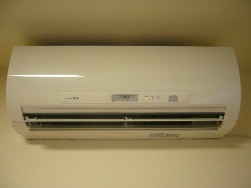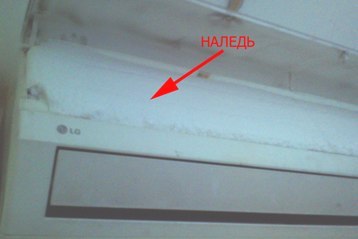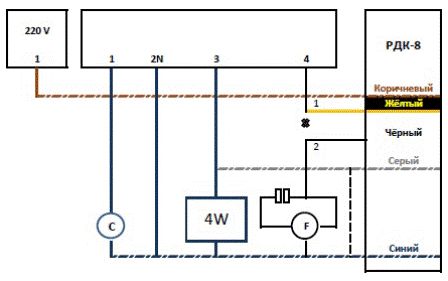Categories: Featured Articles » Sharing experience
Number of views: 31475
Comments on the article: 5
How to adapt the air conditioner to work in winter
Why is this required?
 Most split systems are designed to operate at an outdoor temperature of -5º C. And this is in the best case, moreover, in heating mode.
Most split systems are designed to operate at an outdoor temperature of -5º C. And this is in the best case, moreover, in heating mode.
As experience shows, nowadays household air conditioners are very often used for cooling in winter in server rooms as well as in technical rooms where working equipment is located. As a rule, it should work smoothly, in any weather. Very often they are cooled by air conditioning in offices - after starting central heating, the rooms become stuffy, thermostats on heating batteries are not everywhere, or they are not used, just turning on the air conditioning.
Why can't household air conditioning work in winter?
There are several problems that get in the way of using the air conditioner in the cold:
-
Start cold compressor.
When the compressor starts, a temperature below the temperature of the indoor unit is possible shock, as it will contain liquefied freon, and the compressor is designed to compress gaseous refrigerant.
Also at low temperature, the viscosity of the lubricating oil increases, which increases the starting current of the compressor and degrades the lubricating properties.
-
Freezing the indoor unit.
The normal temperature of the evaporator of the air conditioner is +5 .. + 10ºС, and at a temperature of 0ºС or lower, the condensate formed on its ribs will freeze, turning first to frost and then to ice.

The temperature of the heat exchanger of the indoor unit depends on the pressure of the refrigerant when it evaporates inside. In turn, the pressure depends on the amount of freon itself in the system and on the heat removal from the condenser - the heat exchanger of the external unit. Heat removal is determined by air temperature and fan speed.
-
Condensate drain freezing.
If the condensate from the air conditioner is vented outside, then below 0º C it will freeze and clog the drain.
Adapting the air conditioner to winter.
Compressor heating
If the compressor is heated several degrees higher than other parts of the refrigeration circuit, then the freon will move from the compressor to them. For this purpose, tape heaters are used - one loop around the compressor is enough to heat it.
You can connect it from a thermostat, which will supply voltage to it when the temperature drops to, for example, + 50º C.

You can use any temperature controller that can withstand a load of about 10 watts and make contact at temperatures below 0ºС.
The disadvantage of this method is the need to purchase a thermostat.
Use the connection diagram of the compressor heater through the compressor winding itself. In this case, the heating element will be turned off when the compressor is running and turned on when the compressor is off.

The disadvantage of this method is the excessive consumption of electricity, since heating will always be carried out when voltage is supplied to the split system. But these losses can sometimes be reconciled, since the power consumption is only 2-3 watts.
The third way to connect appeared relatively recently - directly to the power network. In this case, it is necessary to use a self-regulating heating tape. The resistance of such a heater is temperature dependent. At normal temperatures, the resistance increases and the consumption current decreases to almost zero, and vice versa - with decreasing temperature, the resistance increases and the heating power increases.
To prevent blockage of the outlet of the drainage system to the street, a heating element is inserted into the channel. Connect it in the same way as heating the compressor. And the tape itself must be airtight, as it is in contact with water.
And the last thing to do is to stabilize the pressure.To do this, set the condensation pressure regulator, but in fact - the fan speed regulator.
It is an ordinary temperature regulator that measures the temperature on a condenser, and its load is a fan.
Consider the connection diagram of the most popular controller RDK 8.4, which has no settings at all, and is initially programmed to maintain the condensation temperature.

F - fan motor
C - compressor
4W - four way valve
1, 2N, 3, 4 - block interconnect air conditioner.
We connect the device itself to the power, as it should work constantly.
Further, according to the scheme, we connect all the elements of the air conditioner.
When the air conditioner is in heating mode a four-way valve must be connected to the control unit, in which case the fan will rotate at maximum speed.
The dashed line shows the connection if the air conditioner works only for cold and there is no four-way valve - that is, you must connect the gray wire to the neutral. Then we attach the thermal sensor to the midpoint of the capacitor using thermal grease.
The disadvantage of this device is that the pressure value is preset and depends on the point at which the sensor is installed, and for proper adjustment it is necessary to place it exactly in the middle of the heat exchanger, which does not always work.
But on sale there are also more advanced devices with adjustment of the condensation temperature and a simpler installation of the sensor - at the output of the capacitor, for example, SB004A manufactured by Spinbrain.
We fix the device itself in any convenient place of the case with screws.

These improvements allow you to shift the range of the split system to - 30º C.
Winter adaptation for the air conditioner to work on heat.
In this case, you need:
-
compressor heating
-
outdoor unit pan heating
Heated drainage is not needed, since condensate will not be allocated on the indoor unit, but on the external one, which is why the heating of the pallet is installed. The accumulated liquid will freeze and eventually damage the fan blades.
It is worth noting that the efficiency of heating with air conditioning decreases with a drop in temperature on the street.
All of the above applies to non-inverter air conditioners, in inverter air conditioners, the operating temperature range is “sewn up” in the memory, and when you leave the range, the electronic control board simply will not turn on the air conditioner.
Dubrovin Alexander
See also at electro-en.tomathouse.com
:
